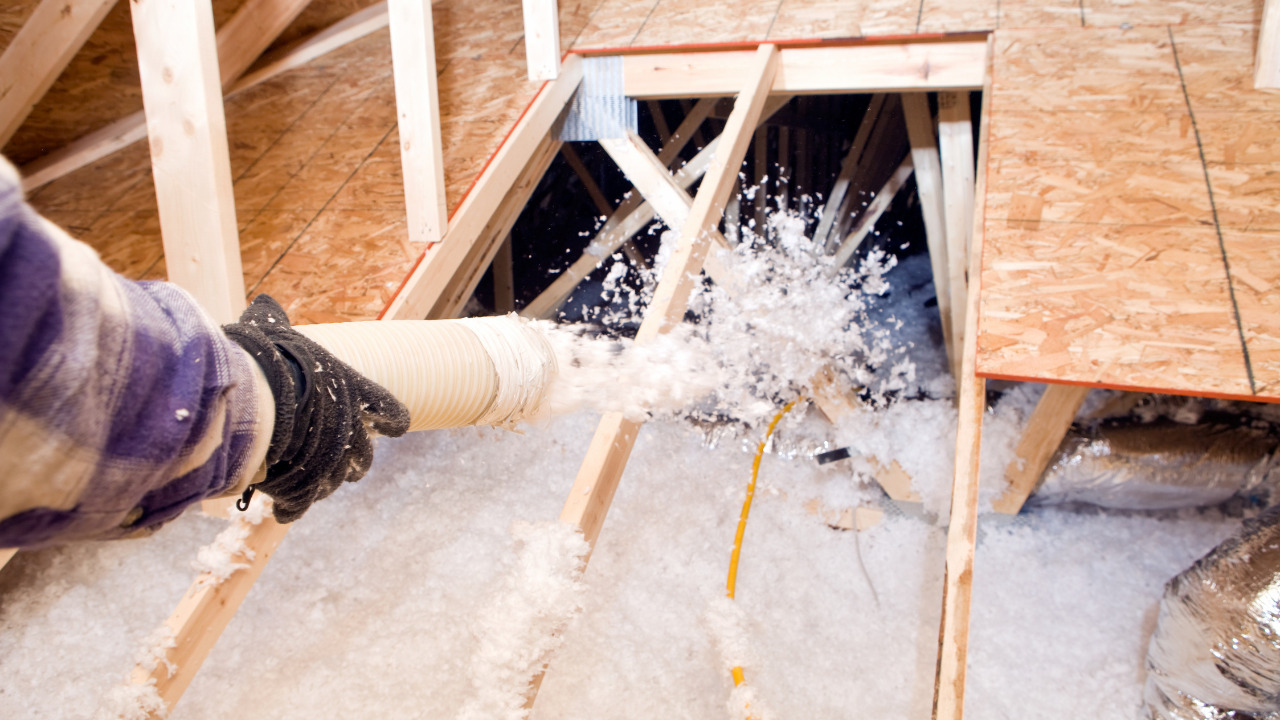Vermiculite is a naturally occurring yellow-brown mineral that results from the weathering of the mineral biotite. It has a striking resemblance to the mineral mica. When heated to high temperatures, it expands, creating air pockets. When exposed to high temperatures, vermiculite does not burn.
If the vermiculite insulation is restricted, it will not be disturbed; it may not be essential to remove it. Hire a licensed or professional team to remove vermiculite insulation to avoid a conflict of interest.
Table of Contents
What Is Vermiculite Insulation?
The origin of the naturally occurring mineral is of primary concern for homeowners who use Vermiculite insulation, but the stigma associated with the presence of Vermiculite impacts the entire real estate process for the ordinary home buyer. In its natural state, Vermiculite has no health risks.
However, new research has shown that Vermiculite also includes asbestos in some cases, which is hazardous when inhaled. In difficult situations, asbestos particles absorbed into the lungs have been linked to asbestosis and lung cancer. This poses a major risk to employees, particularly those who have been in touch with it for a long time.
What Are The Benefits of Vermiculite Insulation?
- Vermiculite insulation is excellent at insulating against heat. It retains heat in the winter, warming the house, and releases heat in the summer, allowing the room temperature to be controlled.
- Non-combustible
- Easy to use because of mineral properties
- The high retention rate for moisture
- Easy to compact than asbestos
- Affordable for all homeowners
When Does Vermiculite Insulation Cause Issues?
No doubt, vermiculite insulation is a mineral material and can compact easily. But workers who contact vermiculite insulation for a long span suffer from lung issues and different health risks. The reason is that sometimes vermiculite insulation also includes the asbestos material unnoticeably.
However, the effects may take several years to manifest after inhaling. So, there is no issue if you have undamaged vermiculite insulation in your home. On the other hand, asbestos fiber poses a variety of health hazards when exposed to it for an extended period or in high concentrations. Asbestos fibers are inhaled into the lungs, causing damage to the lungs’ lining.
This could lead to diseases like asbestosis or lung cancer in extreme cases. Asbestosis is a lung disease in which tissue-like substances grow in the lungs, making breathing difficult. It usually appears after a long span of asbestos fiber exposure.
Don’t Try Even To Clean Vermiculite Insulation Yourself
Asbestos fibers are most deadly when inhaled, so don’t damage the insulation or clean it up yourself. Make sure not to use the vermiculite-insulated attics for storage.
Even if your attic requires any remodeling, hiring a professional attic cleaner for this purpose would be great. Asbestos fibers are less likely to spread in vermiculite-insulated walls than in attic insulation, blown around by wind passing through attic vents.
It can be highly costly to remove and clean an entire attic’s worth of vermiculite. The workers must be asbestos-certified to prevent asbestos fibers from spreading throughout the house.
Before being disposed of in designated landfills, the trash must be bagged. Each vermiculite cleanup should include post-cleanup dust analysis to guarantee that the task was done appropriately.
What Do You Do To Remove The Vermiculite Insulation?
It is not essential to remove the vermiculite insulation if it is in good condition. However, you can also remove it as a precaution or future safety of your family members. Make sure to consider the following things if you have to remove the vermiculite insulation:
- Hire a professional for inspection and vermiculite insulation removal.
- Explain the complete steps during the inspection to remove the insulation appropriately.
- Alert all family members or people in the building about the insulation removal.
- Avoid entering the area where the process of insulation removal is going through.
- Cover or move all furniture and items.
- You can also use a moisture-proof cover to seal the unremovable items.
Claim Reimbursement Vermiculite Insulation To Get Removal Cost
If your homeowner doesn’t inform you about the presence of vermiculite insulation material in your purchased house at the time of the agreement, you can surely claim him through a lawsuit for insulation removal cost.
No doubt, it is not an easy and affordable option to remove the vermiculite insulation from your home, especially if it is damaged.
You can also ask for payment to pay medical expenses because of vermiculite insulation suffering. In the case of mold in the home because of vermiculite insulation, you can also ask for compensation against the total paid amount for the home.
Conclusion
Focus on your personal and health safety while buying a house. That’s why it would be great to know about the type of insulation installed in the home when purchasing. According to our suggestion, you should avoid buying a vermiculite insulated house.
Even if the insulation is in good condition, it would be better to consider your health safety before financial profits.





